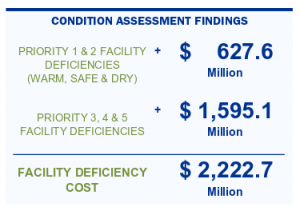Referendum ballot questions rarely fail voter approval in Rhode Island, and they rarely attract much controversy or attention. Unlike many other states with initiative provisions that have allowed voters to bypass their legislatures to, for example, legalize recreational use of cannabis, RI has no mechanism for circumventing the General Assembly. As a result, almost all ballot questions are about authorizing the government to borrow money, which under a 19th century court ruling, requires permission from the voters.
Worse, referendum ballot questions have been on a decades-long trend away from transparency toward outright opacity. It was always difficult to determine from the short one-paragraph summary on the ballot where the money would actually go, but now it is just as difficult to do so after investing real research. Nor are the political promises made outside those short one-paragraph summaries legally binding, as only what is specifically put in front of the voters constrains what the money can be used to do. Voters are effectively being asked to sign blank checks in ever-increasing lump-sum amounts, and in 2018 those amounts have grown pretty large.
1. RHODE ISLAND SCHOOL BUILDINGS – $250,000,000
To provide state assistance to cities and towns for the construction of new public schools and renovation of existing public schools.
Sure, everyone seems to agree that education is important and schools are falling apart, but no one seems to have any idea how this quarter of a billion dollars will be allocated. State aid to local schools, part of the annual appropriations process and separate from this bond issue, has long been a flash point between “have” and “have not” districts that differ hugely in demographics: The school systems in Pawtucket and South Kingstown, to cite an extreme disparity, serve very different students and are funded from very different tax bases. Will this bond issue become a similarly political football or will the money be allocated by a logical process to those localities most in need? Will the money prioritize repairs over new construction? It would be nice to know those answers, but I couldn’t get them.

A study commissioned by the RI Department of Education from consultants Jacobs Engineering Group, Inc. Cooperative Strategies and the State of Rhode Island Schoolhouses report, both completed in Sep 2017, concluded that schools in the state need $2.2 billion in repairs – $627.6 million just to achieve the minimal standard of “warm, safe and dry” – but the governor describes this bond issue (in combination with a second $250 million bond issue expected in 2022) as a “once in a generation” investment, and it is hard to see how that math works out with, according to the state budget, local governments expected to kick in $350 million.
2. HIGHER EDUCATION FACILITIES – $70,000,000
For higher education facilities, to be allocated as follows:
(a) University of Rhode Island Narragansett Bay Campus – $45,000,000
(b) Rhode Island College School of Education and Human Development – $25,000,000
URI is clear its money would go toward constructing a new Ocean Technology Center and upgrading piers and docks to support a $100 million research vessel that would be paid for by the National Science Foundation.
RIC will renovate Horace Mann Hall, the center of the college’s traditional core mission of training K-12 teachers. Built in 1971, the 47-year-old facility has fallen far behind the technology that teachers would encounter in real-world classrooms.
3. GREEN ECONOMY AND CLEAN WATER – $47,300,000
For environmental and recreational purposes…
The RI Department of Environmental Management lays out their plans in considerable detail – dem.ri.gov/greenclean – but the highlights are those items that act as catalysts for other investment. Pollution remediation typically invests a small amount of public money to facilitate much more private spending: “Using past brownfield bond funding, $7.4 million has been invested in 33 projects, which leveraged over $630 million in private investment and created nearly 5,000 jobs.” Similarly, the proposed spending on clean water “will unlock close to $40 million in federal funds over two years and an additional $150-$200 million in private sector capital.” Many programs have been very popular, according to DEM: “More than 60 miles of bike paths in Rhode Island are used by nearly two million people each year.”
[Providence only] 4. SCHOOL CAPITAL IMPROVEMENTS $160,000,000 BONDS… in order to fund the school capital improvements plan for the fiscal years 2019-2024, subject to approval of state school housing aid at a reimbursement rate or state share ratio of not less than 75% for those expenditures eligible for state aid…
Providence voters have a 4th local question. Remember that $350 million the state thinks cities and towns can come up with to fund repair and construction for local schools? This is a big part of that in what is by far the state’s largest municipal school system as measured both by number of students and by cost. It is structured as the ultimate blank check for an unspecified 30-year series of projects, although the bond issue itself will be carried out in three tranches of $50 – $55 million each in 2019, 2022, and 2024.
Official ballot questions: vote.sos.ri.gov/assets/upcoming_elections/2018_ballot_questions/state.pdf (statewide) vote.sos.ri.gov/assets/upcoming_elections/2018_ballot_questions/Providence.pdf (Providence)
